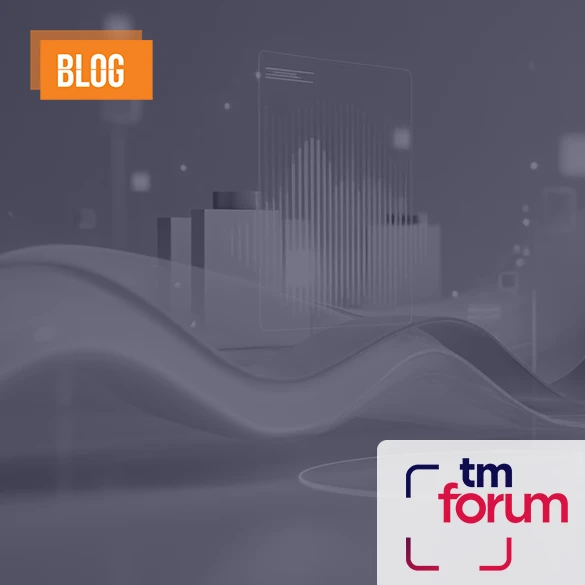Need-based digital transformation? A more tailored, manageable, and affordable way to modernize your business


Has it ever happened to you? You are facing a mega-task, and you know you absolutely must complete it, but it is so huge and daunting that you don’t even know where to start. And there comes procrastination. But the task will not go away miraculously, and while you just delay the inevitable, most probably you miss out on opportunities, lose business and customers.
Digital transformation, especially when you are determined to change everything at once, can prove to be a great challenge. If you sit on a very old legacy system, with lots of “spaghetti” in the background, with a long list of decades-old products and services, complicated processes, and with an inflexible organization structure that is reluctant to change – well, that is not the recipe for a quick and easy success.
But digital transformation does not have to be a nightmare. You can prioritize your needs and transform your systems, step by step. As a prerequisite though, you need to have a very clear understanding of the big picture.
Typically, a holistic transformation is required to fully align the enterprise capabilities to customer needs and to the strategic objectives of the company, to address at the root the various pain points, to remove at the root the barriers to the successful achievement of those objectives, while capitalizing on the digitalization benefits. By holistic, we mean acting on all dimensions: technology, processes, organization, skills, culture, and vital behaviors.
Digital transformation is not just a switch to a new technology, but a cultural change within a company. It requires a new way of thinking and working, that sometimes can be harder to implement than to deploy a new software. A step-by-step approach and a wider employee involvement also help companies to overcome resistance and to change attitudes, as project participants will have a better understanding of the goals, a bigger sense of ownership, and smaller steps will let employees see and feel the benefits of their efforts sooner.
Therefore, first and foremost, you need to clarify the profound drivers for the transformation: the WHY: what strategic objectives do you want to realize, what measurable results and benefits do you want to reach, what measurable gaps do you want to fill in?
Then, the priority is to crystallize the essentials of the big picture: core strategic objectives, expected benefits, success criteria, core enabling capabilities, root causes to pains, root barriers to strategic objectives, strategic enablers (i.e. what cornerstones/pillars you have to set, core changes, that have the most leverage), constraints, etc.; with a clear end-end traceability between all these elements.
This distilled big picture is the most valuable enabler for you to then, engage efficiently and effectively into needs-based transformation as a wise, evolutionary, incremental, and structured transformation roadmap. Indeed, you will have a clear understanding of the benefits, the true ripple effects and impacts of any localized transformation, the areas of highest benefits and return on investment for the short, mid, and long terms. You will be able to effectively establish a prioritization of the needs and pain points to address while having an end-end impacts and benefits understanding.
With the clear big picture in mind, you will need to focus on solving your customer pain points one by one, starting obviously where it hurts the most, but with the end-end understanding in mind. With this approach, you can enjoy quicker wins and benefits, in coherence with the big picture: you can fix the most urgent customer issues first by deploying for example a new system module, with a clear confidence that you are making the right investment in the big scheme of things. You will be not only solving your current problems, but, with the appropriate choice of flexible and advanced product features, you also set the ground for the other upcoming changes, as well enabling new business opportunities.
So, let’s say, your weak point is creating a competitive product portfolio, because of your inflexible legacy stack, that requires a workaround and manual processes every time you need to serve an important key account with a tailored offering. In this case you probably need to start with a powerful product catalog, that will solve this issue for you. And as a next step, you can build additional functionalities on that base, for example, add sales enablement tools like CPQ and Order Management, that will offer you all the process capabilities you need to serve your B2B customers up to their expectations.
Maybe you want to prioritize the retention of your B2C customers, but your current CRM can only handle mass market offers. Then, as a next step you will need to modernize your customer relationship functionalities with a new CRM module, that will manage versatile loyalty programs, and will allow you to create personalized offers with predictive and prescriptive analytics.
This is what we call Need-based Transformation. Some even use the phrase “partial BSS transformation” which is not exactly right, as it is not partial, it is a rather step-by-step, and once you completed all the steps, you can enjoy the benefits of a full digital transformation. It is only a more targeted way to manage transformation. And the “side-benefit”? It is also more affordable, as you can spread your transformation costs over a longer period of time. With this approach you can focus all your efforts and resources to solve the issues with the highest return on investment, as well as the most pressing issues in any given period, and you’ll see the benefits quicker in terms of increased customer satisfaction and business growth.
The modularity and scalability of Etiya’s Digital BSS allow you to go for a flexible, need-based transformation, and you can prepare your company for the demands of the digital age at your own pace, tailored to your specific needs. Integration will not be a problem later on, when you bring in new modules and functionalities, as the individual modules are operating with open APIs, allowing you easy integration.
Slicing the elephant
“There is only one way to eat an elephant: a bite at a time.” Desmond Tutu
Your best starting point remains your customer. At the end of the day, it is about better serving your customer needs and achieving an end-end corporate alignment on the best value proposition to your customer. Your best initial baseline is the mapping of your customer journeys that will enable you to have a clear and exhaustive view of the key customer pain points. A thorough research is essential, as the data coming from that will provide the foundation for your new digital platform. Involve the most authentic information sources: ask your customers directly, and involve your frontline team, as they also have valuable hands-on experiences both on customer problems, and system or process issues. Once you are clear about the issues, and you can quantify how they affect your business, in light of the big picture you initially crystallized, you can set your priorities for your digital transformation process.
Monitoring, measuring and follow-up of results in such a needs-based digital transformation process allows you to plan your next steps in an agile way, building on the learnings from the previous step, and adjusting the scope and targets in the forthcoming steps as and when necessary. CSPs must ensure that they are actively and continuously seeking customer feedback to determine the future development of the omnichannel experience, to keep up with the ever-evolving requirements, and with the upcoming technological innovations.
---- o -----
Etiya, as a software provider and technology partner, supports companies with their digital transformation, and provides professional consultancy services to help them succeed in their innovation journey. As trusted advisors, we help companies first settle the proper strategic frame: establish a holistic alignment of the digital strategy and the business capabilities on the fulfillment of the true end-customer needs and satisfaction through the best customer experience, along the achievement of the companies’ strategic goals and benefits. Our TM Forum compliant BSS solution offers the strategic enablers for a sustainable and successful digital transformation: modules have a rich feature set, a high level of flexibility, they are pre-integrated, easy to implement, open APIs compliant. The use of microservices enables agility, adaptability, scalability, and faster time to market.








